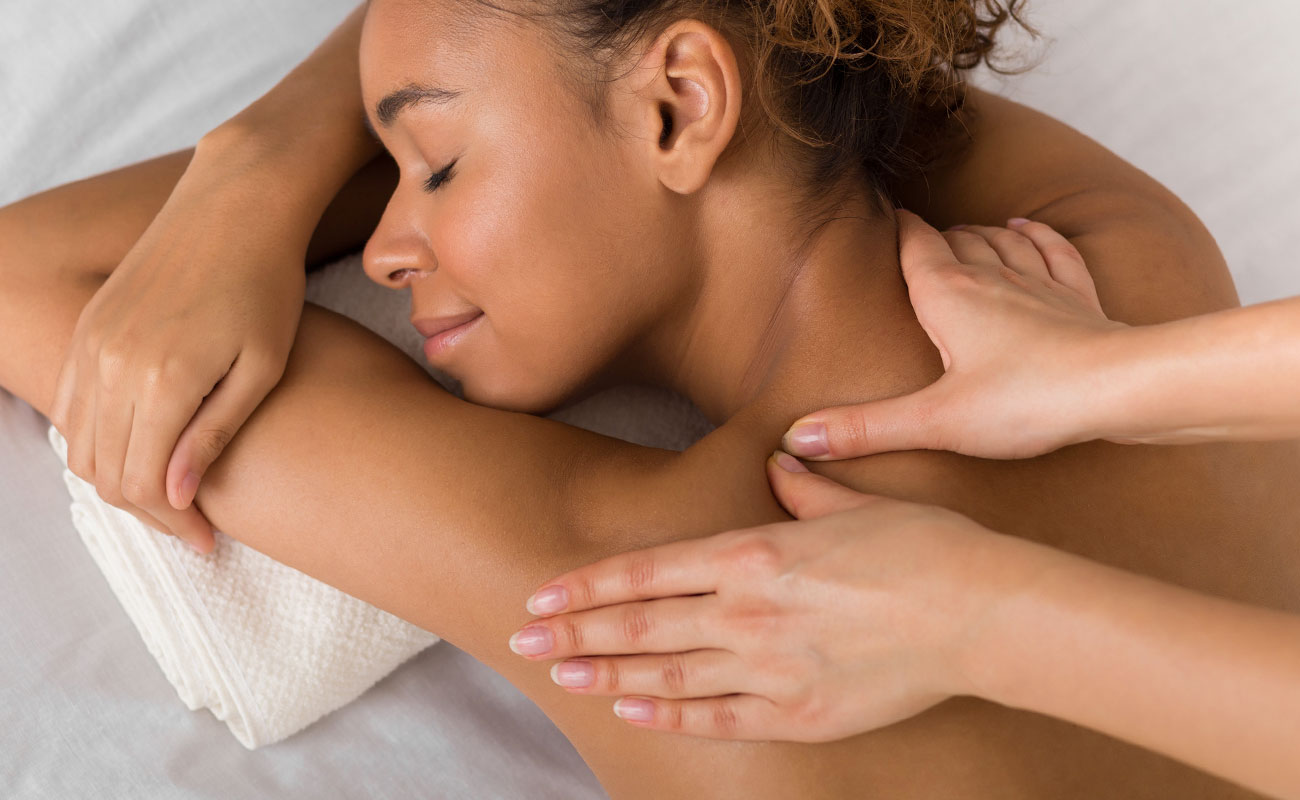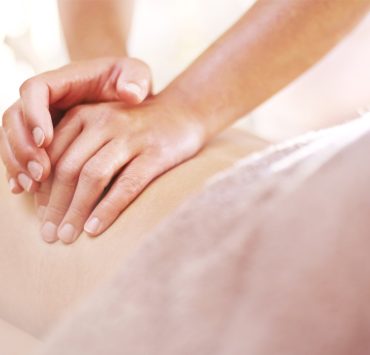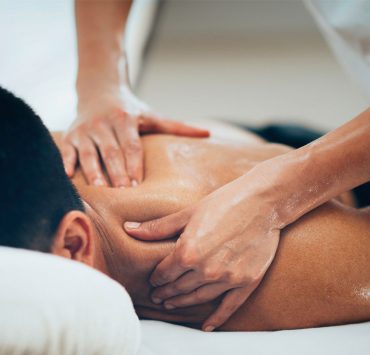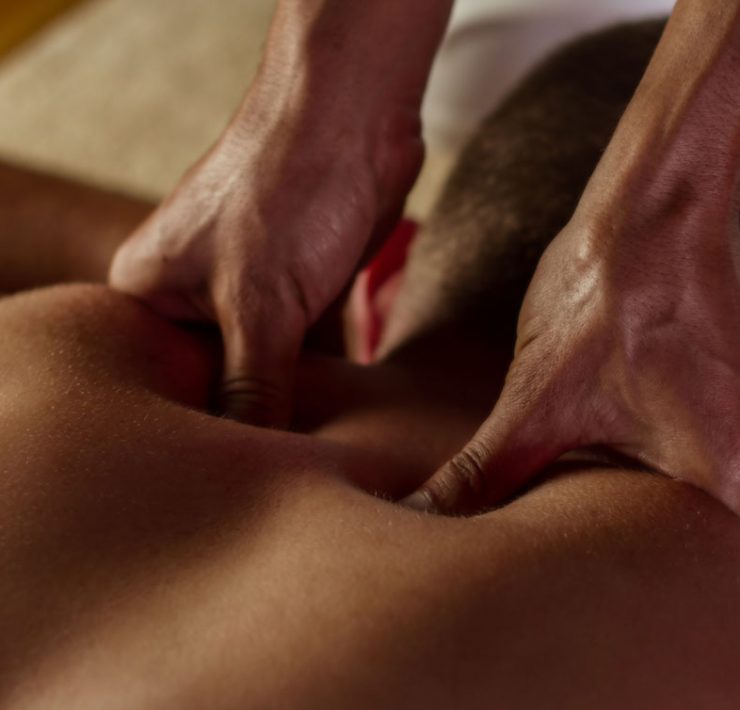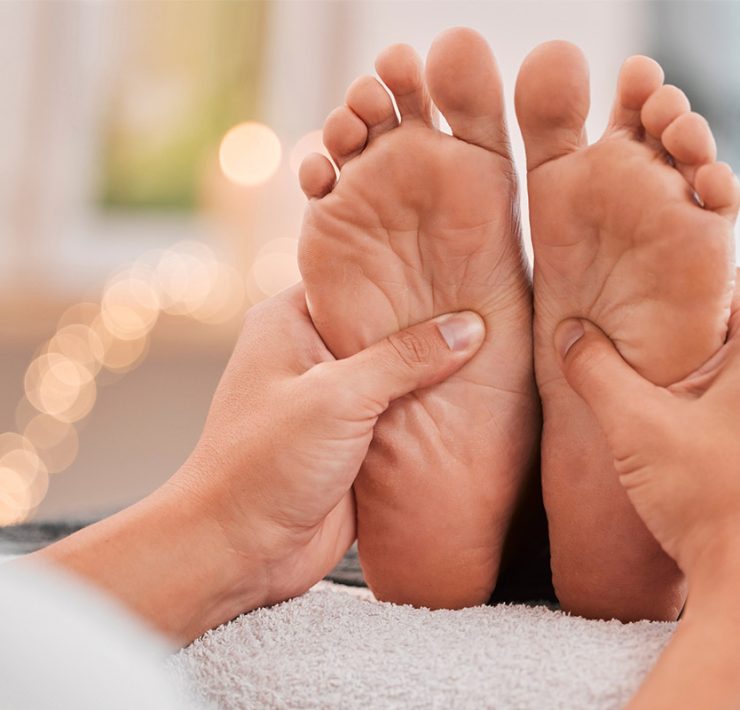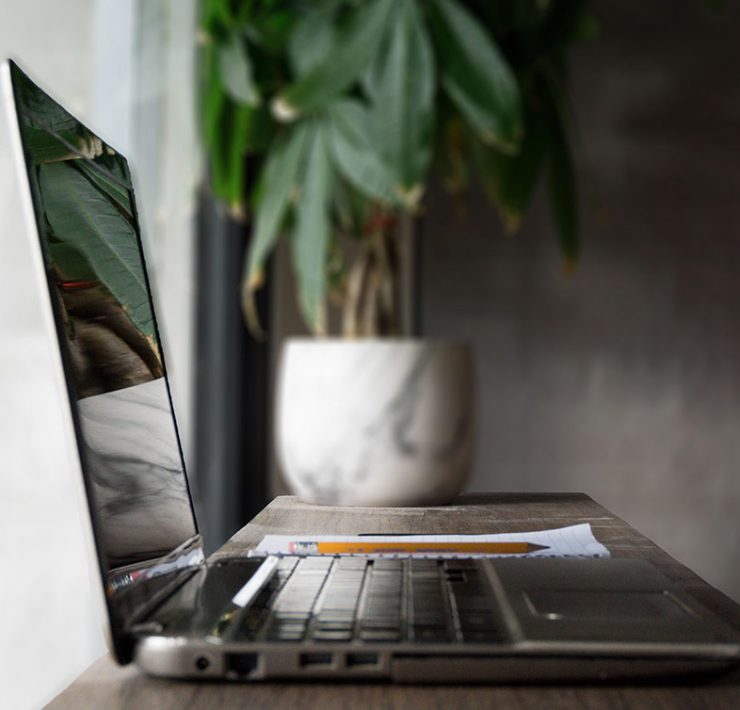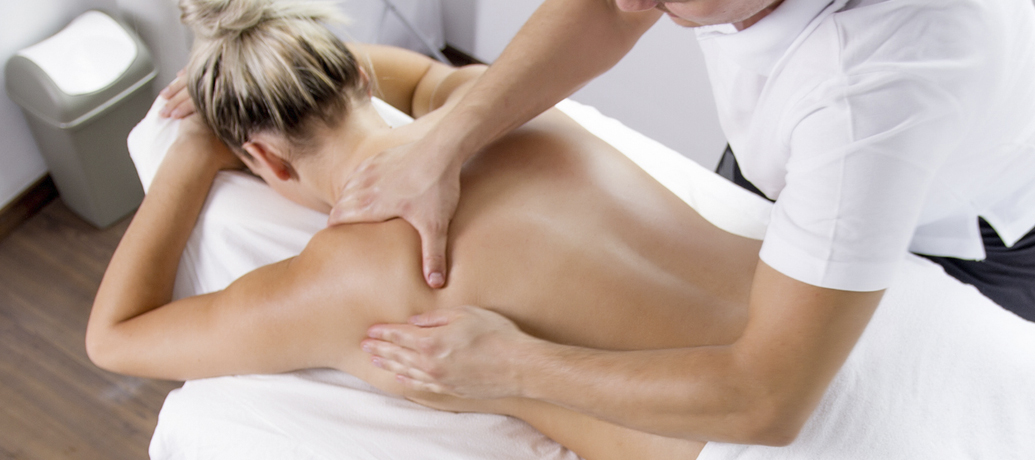At some point in your life, you’ve likely been asked to rub the aching back, tight shoulders, or tired feet of a loved one. With Valentine’s Day on the horizon, that likelihood may increase significantly, so here are some professional pointers for giving a great massage at home.
Positioning is Key
As you start your massage, make sure that both you and the massage recipient are in comfortable body positions. Ideally, you would use a massage table with a face cradle, but if that’s not handy, make sure the recipient’s body is ergonomically supported with pillows or cushions.
If they are laying face down on a surface, they will be most comfortable with a stiff pillow under their torso so they can more easily turn their head to breathe. Additionally, placing a pillow under their ankles will increase comfort in their joints. If the receiver is face up, you will likely need a pillow under their knees and potentially under their head.
As the person giving the massage, you should be positioned at an angle that affords you the leverage to lean on the recipient. You should not be contorting your body in any way; instead, imagine yourself leaning into a kitchen counter. You’ll be most comfortable if the pressure you apply in the massage comes from your bodyweight leaning and not from your muscles pressing.
Plus, if you think about massaging “through” the receiver’s body instead of “on” their body, your massage pressure will be perceived as much more encompassing and complete.
Finger Positioning
One of the most common reasons people don’t enjoy giving a massage is because it hurts their hands—particularly the thumbs.
A massage therapists’ rule of thumb is to minimize use of the thumbs in any stroke (see below for more comfortable hand positions). If you do use fingers, and in the very rare instance your thumb(s), make sure they are positioned to function as extensions of the force applied by your leaning bodyweight. Don’t try to generate pressure from the muscles of your hands, which will tire out both your hands and your arms quickly.
If you absolutely must use your thumb, make sure it is a “supported thumb” by making a fist and letting your thumb be supported by your pointer finger and the rest of your fist. Just watch your fingernails in this position so they don’t dig into your partner’s skin!
Key Massage Techniques
The first thing to know when giving a massage is that people are made up of muscles, which you of course already knew, but muscles typically have a very specific orientation—like the direction of the “grain” in a piece of wood or a steak. Knowing the orientation of the muscles will help you give a good massage, and any muscle chart can be your guide.
Begin the massage with a light pressure to warm up and relax the muscles, and communicate with your partner to see if they’re comfortable with it. If they’d prefer more pressure, you can increase it according to their tolerance.
Keeping in mind the body and hand positioning described above, you can apply the following techniques to any primary muscle group, using the base of your open palm:
- Long strokes applying pressure with the orientation of the muscle
- Long strokes applying pressure perpendicular to the orientation of the muscle
- Create more space in the muscle – for upper traps, this might look like a very gentle pinch and pulling away from the underlying tissue.
- Circular motions along the muscle
- Gentle twisting in alternating directions around the wrists and ankles
Next, can try the techniques above with different hand positions such as those described below (remembering to preserving good body mechanics):
- Stiff finger tips, known as a “Barbie hand” (hold your fingers together to form paddles with your hands, then bend the longer fingers slightly until your fingertips can apply a straight line of pressure)
- Knuckles while holding a loose fist
- Knuckles while holding a clenched fist
- Elbow
- Forearm, but slightly turned so that the pressure is coming from the muscles on the inside of your forearm rather than your ulna bone
Also note that your partner will benefit even more if you massage the muscles surrounding any particular muscle group that needs TLC. For example, in a massage to help with aching feet, you will likely want to include the calves. Upper back pain? Start there, but add in the neck, shoulders, and the rest of the back.
Oil, Cream, Lotion, Gel, or Body Butter?
Whatever product you choose, first make sure it’s water-soluble, to avoid greasy-looking stains. Oils are frequently not water-soluble and can stain linens (and furniture and clothes and more), or even worse, go rancid and begin to smell after a spill.
As a non-professional, you may find massage gels and oils unruly to work with, making lotion, cream, or body butter a safer bet. They are easier to dispense, stay put in your hands, and can be easily applied where you choose.
Massage lotion or cream is best for a novice, but don’t just use any old product you have handy. You need a lotion or a cream that’s specifically designed for massage (as opposed to a typical daily moisturizer); these provide more glide and are absorbed more slowly into the skin, lengthening the time between reapplications.
A note on body butter: These products can turn oily when exposed to body heat, providing a nice amount of glide, but may leave an oily—and potentially staining—residue that could be absorbed by sheets or clothing.
If you must use oil, be sure to set it on a protected surface between applications during the massage—even if you don’t spill anything, the bottle will get oily and can leave a ring.
Lastly, whatever you choose for massage lubrication, make sure that your massage recipient (and you) enjoy the scent of the product. Fragrances like lavender, chamomile, coconut, or eucalyptus can enhance the experience of a massage…but if you’re not into the smell, it can just as easily ruin it!
Seem Like a Lot of Work?
That’s why there are credentialed massage professionals out there! And if you book a massage with Zeel, you won’t even have to leave your home (or provide the massage lotion!)—a skilled, licensed massage therapist will bring the whole experience to you!
Melanie Peddle holds a MS in Mechanical Engineering and has been practicing massage since 2012. She is an instructor with Western Colorado University in its partnership with the University of Colorado, focusing on biomechanical engineering and injury, as well as applications in adaptive sports. An accomplished collegiate athlete, Melanie brings an engineer's mind to all her physiological pursuits, and a passion for the most interesting engineering challenge of all: the human body.

